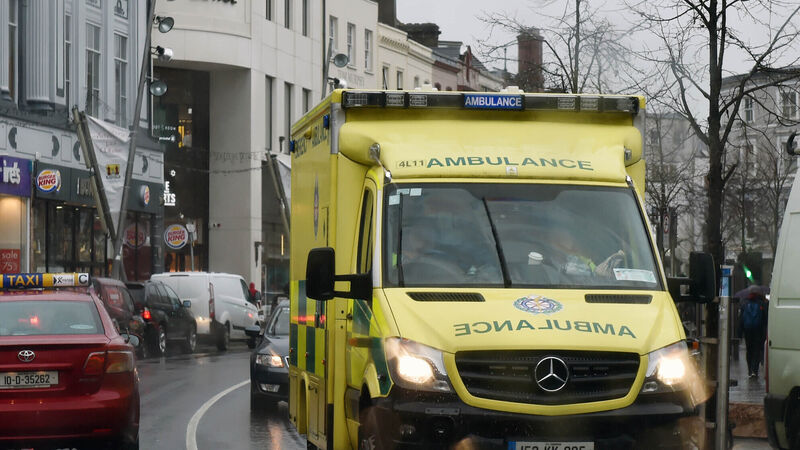Number of patients dying before ambulance arrives is up by 70% in eight years

The HSE released the ambulance response time data to Aontú leader Peadar Tóibín who had requested the figures through a parliamentary question. Stock picture: Eddie O'Hare
For 1,108 callouts last year attended by the National Ambulance Service, the person was deceased by the time of arrival. This is up 100 on the 2022 figure, which was 1,008.
In 2016, when data on such response times first became available, there were only 657 deaths at the time of ambulance arrival.
HSE figures also show that the number of ambulances that waited more than an hour to hand over patients at hospitals has reduced in the last year.
In 2022, on 94,639 occasions an ambulance was waiting more than an hour for a handover, and on 76,970 occasions across 2023.
Aontú party leader Peadar Tóibín, who requested the figures through a parliamentary question, said: “We need to move heaven and earth to increase the number of ambulances and ambulance staff and drivers in the country, but we also need more [hospital A&E] capacity and more GPs to reduce the pressure there.”
Average waiting times improved last year.
• Ambulances in the south of the country arrived within 25 minutes of callout on average. This is a reduction from 2022, when it took an average of 31 minutes.
• However, response times are still significantly longer than the pre-pandemic average, when it took only 18 minutes for an ambulance to arrive.
• Waiting time is the longest in the southeast, with ambulances taking an average of 29 minutes to arrive in the region.
• In the Midlands, the wait time is the second longest, at an average of 28 minutes, an increase of nine minutes on 2019.
Mr Tóibín said that there has been “little improvement” in ambulance response times over the last year. He said:
“We continue to have the situation where ambulances cannot leave hospitals to respond to a call, because the patient from the previous callout cannot be delivered to the A&E, because the patient is lying on the ambulance trolley in the accident and emergency. This is scandalous.”
A spokesperson for the HSE said that there has been an “unprecedented” spike in demand for ambulances since 2019, up by 14%.
They said that, under the 2023 service plan, 75% of all life-threatening, cardiac-arrest or respiratory-arrest calls should be met within 19 minutes.
Their most recent data shows that they reached 72% of all these calls.
Of ambulance turnaround times, the spokesperson said that “every effort is made to ensure that ambulances are turned around in as timely a manner as possible”.













